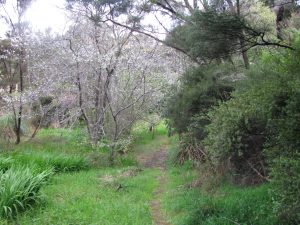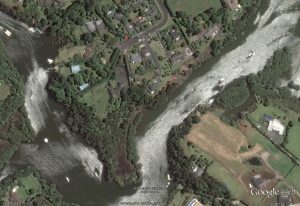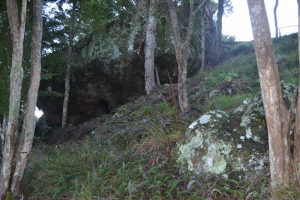 “Many of our reserves are beautifully preserved time capsules that have remained largely unchanged over the decades, and contain some wonderful evidence of a fascinating and varied history,” says Heritage New Zealand’s Northland Manager, Bill Edwards.
“Many of our reserves are beautifully preserved time capsules that have remained largely unchanged over the decades, and contain some wonderful evidence of a fascinating and varied history,” says Heritage New Zealand’s Northland Manager, Bill Edwards.
“People can see features spanning several hundred years of tangata whenua occupation in and around the Basin. It also contains evidence of the arrival of Pakeha and some of the turbulence that emerged as a result of interactions between these newcomers and Maori,” says Bill.
The Media Release is as follows:
June 13
MEDIA RELEASE
Heritage treasures there to enjoy in Kerikeri public reserve
The historic value of some of Northland’s public reserves is being highlighted by Heritage New Zealand.
“Many of our reserves are beautifully preserved time capsules that have remained largely unchanged over the decades, and contain some wonderful evidence of a fascinating and varied history,” says Heritage New Zealand’s Northland Manager, Bill Edwards.
“A small reserve – located downstream from Kororipo Basin – is a great example. For those who know what to look for, evidence can be seen of heritage features that span hundreds of years – and very different eras in time.”
Down from Rewa’s Village on the north bank of the Kerikeri River and below the Kororipo Basin, the track to the reserve leading off James Kemp Place takes visitors to places that hint at the area’s intriguing past.
“People can see features spanning several hundred years of tangata whenua occupation in and around the Basin. It also contains evidence of the arrival of Pakeha and some of the turbulence that emerged as a result of interactions between these newcomers and Maori,” says Bill.
“At the end of the reserve is a point, used as a dingy landing for people who enjoy boating on the Kerikeri River. It’s not hard to see that this probably served as a waka landing in the past as people tend to use the same natural features for similar purposes over time.”
The remains of three kumara pits can be seen in the reserve dating back to pre-European times. One of the pits is the largest in the Kerikeri area, and could easily hold two family cars. The sheer size of the pits is revealing according to Bill.
“They show that there was a significant Maori population living in the area, and that the large storage pits were established in order to store this vital source of carbohydrates effectively. There is a connection with this reserve to the Kororipo pa across the river – the river was not a barrier but a way of connecting these places,” he says.
“The fertile soils around Kerikeri – as well as the Taiamai Plains near Waimate North – were able to sustain large populations of people. This, combined with the Kerikeri River connection to the sea through the Bay of Islands, made the area a natural centre for settlement.”
In other parts of the reserve a very early orchard – which still survives – can also be seen, containing early cultivars of fruit trees, including lemon, plums and quinces. These plants probably date from the beginning of Pakeha settlement and add to our knowledge of other early plantings in Hohi [formerly Oihi] and Kerikeri.
Further research work needs to be carried out on this orchard according to Bill – but it is of high significance.
“It is also believed that a cannon emplacement existed here as part of defences for Hongi Hika’s Kororipo Pa,” he says.
“Although archaeological evidence for the exact location of the cannon has never been located there are reports by local residents of a rotten wooden gun carriage above the point, though this cannot be found.”
The Reserve is more than just a beautiful bushwalk. As part of the wider Kororipo Basin it is a remarkable heritage landscape.
“This area is steeped in history. It is a place that saw pivotal change, which then impacted Northland and the rest of the country forever. It’s a place where Maori and Pakeha have lived continuously for almost 200 years,” says Bill.

Fruit trees dating back to the earliest days of Pakeha settlement. (Image sourced HNZ Media Release)
“Evidence of that interaction can be seen everywhere – along with remnants of an earlier time. Like many public reserves in Northland it has multifaceted values. Knowing more of the history of this place adds another dimension to our appreciation and enjoyment of it.”
Media Contact: Bill Edwards, Ph 09-407-0471













Comments are closed.